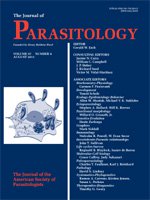In June 2009, 27 guinea pigs kept at an animal petting facility at a zoo in Kanagawa Prefecture, Japan, were observed to scratch intensely, weaken, and develop lesions. Three sarcoptiform mites were found in skin scrapings taken from affected areas of 2 guinea pigs, and they were identified as Trixacarus caviae by morphological examination. This result confirmed the presence of T. caviae in Japan. For treatment, doses of 13.6–18.75 mg/head of selamectin were administered in a topical preparation applied to a single spot on the skin on the back of the neck, and no side effects were observed. In April 2010, a second outbreak of mange occurred at the zoo, and, following investigation, 2 mite eggs were observed. It was, therefore, thought probable that the mites had survived during the winter within nonclinical carriers. Accordingly, doses of 5.0–7.5 mg/head of selamectin were applied on days 0 and 28, after which clinical symptoms disappeared and general condition improved. This dose of selamectin was thus shown to be a suitable and economical treatment for guinea pigs infested with the mites. Because the mite is not always easily observed in infested guinea pigs and the potential for human infestation exists, clinicians should not hesitate to treat when the clinical presentation suggests infestation, particularly in a setting such as an animal petting facility, where large numbers of children and adults have direct contact with the animals.
How to translate text using browser tools
1 August 2011
An Outbreak of Trixacarus caviae Infestation in Guinea Pigs at an Animal Petting Facility and an Evaluation of the Safety and Suitable Dose of Selamectin Treatment
M. Honda,
K. Namikawa,
H. Hirata,
S. Neo,
T. Maruo,
J. Lynch,
A. Chida,
T. Morita
ACCESS THE FULL ARTICLE

Journal of Parasitology
Vol. 97 • No. 4
August 2011
Vol. 97 • No. 4
August 2011




